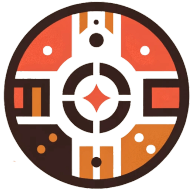How to Create a Culture of Continuous Improvement After Transformation
Navigating the aftermath of transformation requires a strategic approach to foster a culture of continuous improvement. This article delves into effective methods recommended by industry experts that ensure sustained innovation and growth. From embracing a 'Fail Fast, Learn Faster' mindset to launching AI-driven feedback initiatives, the insights provided offer a roadmap for organizations seeking to thrive in a dynamic business environment.
- Implement Tech Innovation Guild for Continuous Enhancement
- Embrace 'Fail Fast, Learn Faster' Approach
- Introduce Cross-Functional Innovation Sessions
- Create Structured Employee Feedback Loop
- Launch AI-Driven Feedback Fridays
- Establish Monthly Innovation Hour for Process Optimization
Implement Tech Innovation Guild for Continuous Enhancement
Following a technology transformation, we established a culture of continuous improvement by implementing a Tech Innovation Guild, a structured initiative that encouraged cross-functional collaboration, iterative learning, and automation-driven optimizations.
One key practice was the biweekly retrospectives and innovation sprints, where teams analyzed real-world performance metrics, integration challenges, and user feedback after deploying new Workday and cloud infrastructure modernization. Instead of waiting for major upgrades, we adopted a Kaizen-style continuous enhancement model, where teams proactively identified automation opportunities, performance bottlenecks, and security gaps using AI-driven observability tools like AWS X-Ray and Workday Extend analytics.
A notable impact was the automation of payroll data reconciliation, reducing manual intervention by 60% and improving processing time by 30%. Employees actively contributed to improvements, supported by an incentive-based idea submission program, fostering continuous innovation.
The main takeaway is that technology transformation is not a one-time event--it requires an embedded feedback loop, leadership support, and a data-driven approach to drive ongoing efficiency and adoption.

Embrace 'Fail Fast, Learn Faster' Approach
After a big tech transformation, the key to keeping the momentum going isn't just about the tools--it's about the people using them. At AppMakers LA, we built a culture of continuous improvement by making experimentation and learning a normal part of the process. One initiative that worked really well was our "Fail Fast, Learn Faster" approach--instead of waiting for a perfect, polished solution, we test small changes quickly, gather feedback, and tweak as we go. We started running monthly innovation sprints, where teams experiment with new tech, automation, or workflows without the pressure of long-term commitment. If something works, we scale it. If not, we move on--no red tape, no ego, just learning. The result? People stopped fearing change and started leaning into it. They know that if a new tool or process isn't working, we'll adapt, not force it. The biggest lesson? Continuous improvement only happens when your team feels safe to try, fail, and improve--over and over again.
Introduce Cross-Functional Innovation Sessions
After a major technology transformation, I focused on creating a culture of continuous improvement by implementing a feedback loop system. One specific initiative was introducing monthly cross-functional innovation sessions where employees from different departments could share feedback on the new systems and suggest improvements. These sessions allowed us to identify pain points early, optimize processes, and celebrate small wins.
Additionally, I encouraged a mindset of agility by promoting the use of iterative development and data-driven decision-making. By regularly reviewing performance metrics and revisiting goals, we ensured that our teams were not just adapting to the change, but actively improving with each iteration. This approach empowered employees to contribute ideas, fostering a sense of ownership and accountability, while continuously evolving our processes to better meet business goals.
Create Structured Employee Feedback Loop
One key initiative we implemented at Parachute to build a culture of continuous improvement after a major technology transformation was creating a structured feedback loop for employees. When we introduced a new digital operating system to streamline IT support and security services, we knew that success depended on how well our team adapted and improved over time. Instead of a one-time training session, we set up ongoing check-ins where employees could share challenges, suggest improvements, and refine processes based on real-world use. This open channel made employees feel heard and encouraged them to take ownership of system enhancements.
To reinforce this mindset, we integrated small, daily improvements into everyone's routine. Technicians were asked to document process refinements as they discovered them, whether it was optimizing ticket handling, improving documentation, or finding ways to reduce response times. These small, incremental changes added up, making the system more efficient while strengthening a problem-solving culture. The key was making improvement a natural part of the job, rather than a separate project or initiative.
Leadership played a critical role in making this shift successful. I made it a point to participate in discussions, acknowledge improvements, and celebrate wins, no matter how small. When employees saw leadership actively engaged in the process, they became more invested. Over time, this approach not only improved system performance but also fostered a team-wide commitment to refining how we work. That commitment remains a core part of how we operate today.

Launch AI-Driven Feedback Fridays
Following our technology transformation, it became clear that true success hinged not only on adopting new tools but also on embedding a mindset of continuous improvement across the organization. To foster this, we introduced an initiative called "AI-Driven Feedback Fridays." Each Friday, our teams would gather to discuss their experiences with the newly implemented AI solution OfficeIQ (www.officeiq.ai), supported by insights generated through our internal AI analytics platform. This practice allowed real-time capturing and categorization of employee feedback, enabling rapid identification of areas for enhancement.

Establish Monthly Innovation Hour for Process Optimization
After our big technology change at my company, making a culture of continuous improvement a priority was top of mind. One initiative I implemented was a monthly "Innovation Hour" where teams from all departments would dedicate an hour to explore new technology, suggest process improvements and discuss the challenges they were having with the recent changes. This allowed everyone, from developers to customer service representatives, to share their ideas for optimizing workflows and using our new technology better.
To make it work, I made sure there were clear action items after each session. For example, after one session, the team realized our CRM wasn't fully integrated with our project management tool and was causing inefficiencies. We assigned a small team to research solutions and within weeks the integration was up and running. This kept the momentum going after the transformation and empowered employees to take ownership of improvements, so a proactive mindset spread across the company. Over time this has helped make continuous improvement part of our culture.




